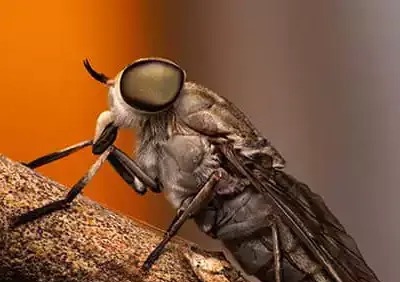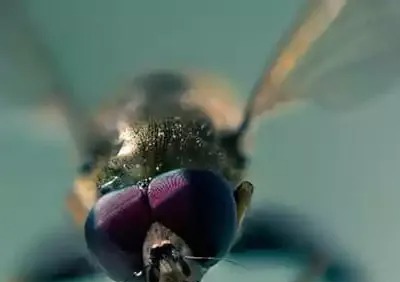
Horse Flies
Learn About Horse Flies
Frequently Asked Questions
-
Do horse flies bite?
Yes, but only the females. Male horse flies do not bite because they do not feed on blood; they only feed on pollen and nectar. Female horse flies bite in order to feed on the blood of their victim; they require blood meals in order to be able to reproduce. Horse flies detect a person or animal by movement, warmth, or through the carbon dioxide they emit. They typically bite legs, arms, or the body of their victim.
-
Are horse flies dangerous?Yes, horse flies are considered to be dangerous to both people and animals. Female horse flies are aggressive and their bites are very painful because their mouthparts tear at the skin of their victim instead of simply piercing it. Some people may be allergic to their bites and, in some cases, a secondary infection may occur at the bite site. The good news is they aren’t known to transmit diseases to people. Horse flies carry and transmit equine infectious anemia to horses and ponies which has the potential to become fatal.

-
 Adult Horse FliesAdult horse flies grow to between ½ and 1 ¼ inches in length. Their stout bodies are gray to black in color and their wings may be clear or slightly cloudy. Horse flies have large, bright green or purple eyes and very short antennae.
Adult Horse FliesAdult horse flies grow to between ½ and 1 ¼ inches in length. Their stout bodies are gray to black in color and their wings may be clear or slightly cloudy. Horse flies have large, bright green or purple eyes and very short antennae. -
 Female Horse FliesFemales have specialized blade-like mouthparts that they use to slash the skin of a person or animal and spongy mouthparts that they use to suck up the blood.
Female Horse FliesFemales have specialized blade-like mouthparts that they use to slash the skin of a person or animal and spongy mouthparts that they use to suck up the blood.

Pests Beware. We Care!
Trust Keller's Pest Control For Reliable Service With Integrity
-
No Obligation Estimates
-
Family-Owned & Operated
-
29+ Years in Business
-
Knowledgeable Technicians
-
Customer Top-Rated
-
No Contracts


-
"Exceptional Company"Keller's Pest Control is exceptional in every way! Their team is knowledgeable, professional, and genuinely dedicated to ensuring a pest-free home. From quickly addressing serious issues to providing regular, reliable maintenance, they’ve exceeded.- Aleks S.
-
"They Explained Everything"Keller's was very quick to respond to my call and came to the house at my convenience. They did such a great job at explaining things and I went with the quarterly service plan. Very reasonable pricing and gave us piece of mind.- Ron Q.
-
"4+ Year Customer"We have used them for over 4 years. Our technician is very knowledgeable and professional. We are gone from the property sometimes as long 4 months and never have any pest issues. We highly recommend Keller’s Pest Control.- Bill B.
-
"Outlined Treatment Plan"The technician was great and clearly explained what issues we were having in our home. They outlined the treatment plan to address those issues and the time frame. Very friendly and we look forward to a great relationship as their happy customer.- Kevin A.
-
"Knowledgable & Efficient"The technician was so knowledgeable about my bed bug issue. They came in with a heat machine and eliminated the bug quickly and efficiently. I was able to get my rental back in action the next day! Great company.- Christopher W.
-
"10+ Year Customer"I’ve used Keller’s for pest control at my house for more than 10 years. They have always provided excellent, speedy, and complete service. It's pleasure to do business with them.- Bob W.
-
"A+ Communication"I've been using Keller's for over three years now and they've been great. I've had some bug problems and they have been very responsive at fixing them even if it meant showing up out of cycle to handle. Communication is key and they get an A+.- Jeff I.
-
"Bed Bugs Gone"Keller’s Pest Control is by far the best service we’ve ever had! Patrick Keller is professional, thorough & amiable. The bugs have been gone ever since they first serviced us! We will continue our service can’t recommend them enough.- Sara M.
-
"Longtime Customer"We have been working with Keller’s for a long time and could not be happier with their service and expertise. They are responsive and honest. We appreciate the technicians and the office team. Thank you, Keller’s Pest Control!- Christine S.

Go With the Team You Trust.
See Our Proud Affiliations, Certifications & Awards

-
 Our Reviews
Our Reviews -
 Read Our Blog
Read Our Blog -
 Save on Service
Save on Service









